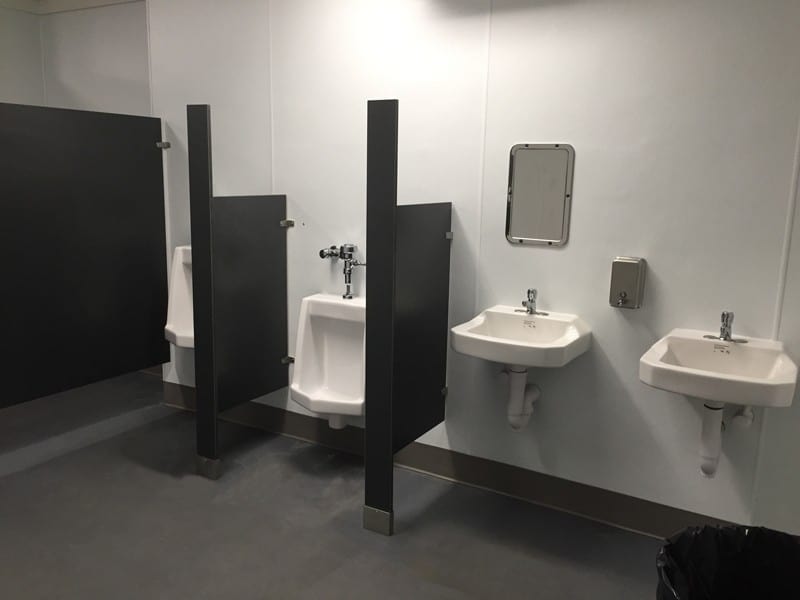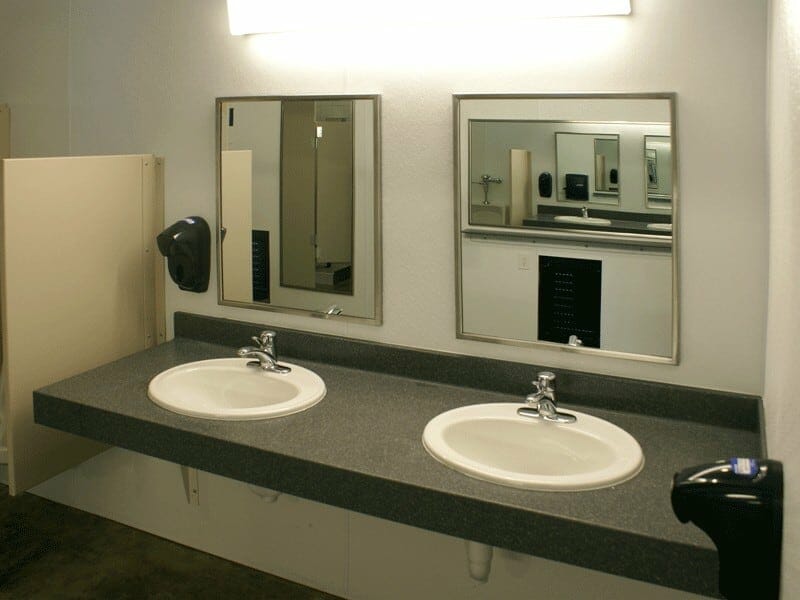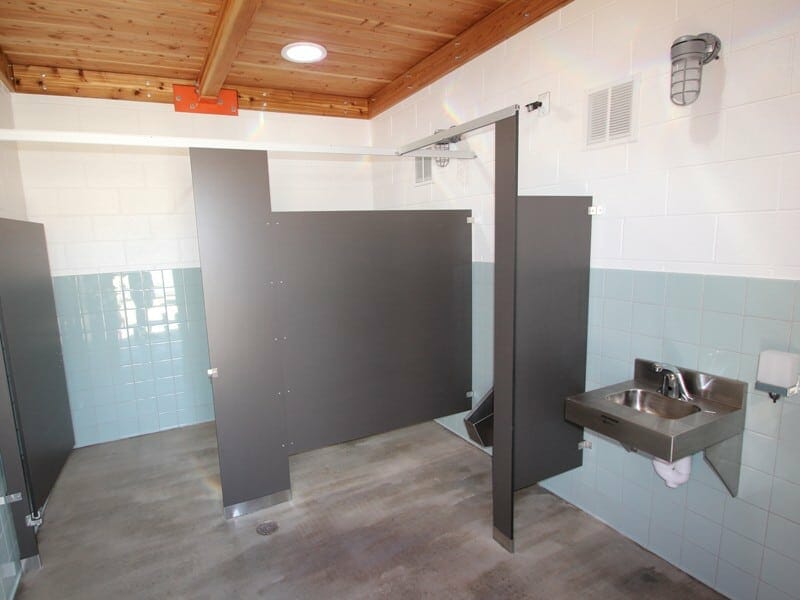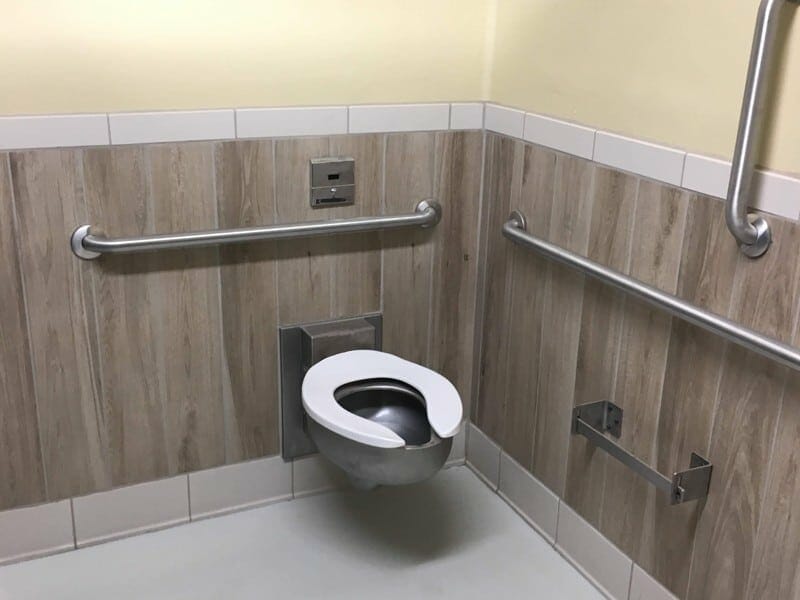
Romtec designs, supplies, and constructs buildings and structures for parks and other public use applications. Many of our buildings include restrooms, showers, and concession spaces that require many different types of accessories and fixtures. Among these are a wide variety of brands and styles, but three materials are frequently used for restroom fixtures and accessories commonly found in public restrooms. Porcelain, stainless steel, and plastic are all frequently used in different restroom applications, and each of these materials have distinct advantages that they offer to restroom buildings.

Porcelain
Porcelain, also called china, is a ceramic material that has been used in restrooms since the 19th century. This material is still widely used in both domestic and public restroom applications. China toilets and sink fixtures are more fragile than their steel counterparts, but they’re inexpensive manufacturing costs make them a more affordable option that is easy to replace. Porcelain is notable for its clean white appearance, but it is available in custom colors from some manufacturers. China fixtures may be preferred in some situations to match interior design features inside the restroom and to provide the “classic” look.
Stainless Steel
Steel is a durable material that is well suited for heavy wear-and-tear and/or vandalism that high-traffic public restrooms are subjected to. This material resists moisture, making it a hygienic and easy to sanitize surface option. Though stainless steel typically will require specialized cleaners to avoid getting a “foggy” appearance. Many different fixtures and restroom accessories are manufactured using stainless steel, such as toilets, seat cover dispensers, and sinks. Additionally, stainless steel has a unique appearance that can be used to create or enhance stylish modern restroom designs.

Plastic
Plastic is also frequently used in restroom interiors. These materials are often used for restroom accessories, like soap dispensers, paper towel dispensers, and waste receptacles. Restroom partitions are also commonplace in public use applications as easy-to-clean surfaces. Although the flush toilets themselves are not constructed using this material, toilet seats and other contact surfaces can be fabricated using plastics. Antimicrobial options are even available for increased hygienic value to meet certain design standards. In waterless restroom applications, plastic toilet risers and urinals are used almost exclusively.

Considering the Material Options
Romtec can include any material, brand, or style of fixtures and accessories in your restroom building according to your project requirements and preferences. Porcelain, stainless steel, and plastic materials are frequently used in restrooms and each offer distinct advantages. Choosing between these materials often requires consideration for the unique application and traffic requirements. Contact Romtec today for more information about these material options for your restroom project!
